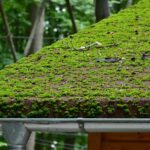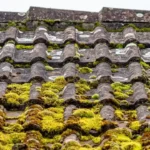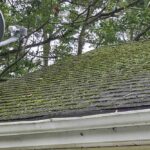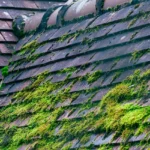Maintaining a home involves various tasks, and one crucial aspect is ensuring your roof drains are functioning properly. How to reduce sediment buildup in roof drains is a question many homeowners ponder. This buildup can cause severe issues if not addressed, leading to water damage and costly repairs. In this article, we’ll explore strategies and techniques to minimize sediment buildup in roof drains, keeping your home safe and sound.

Understanding the Importance of Roof Drain Maintenance
Roof drains play a vital role in directing water away from your home. Without proper maintenance, sediment can accumulate, leading to clogs and potential water damage. Understanding the importance of regular maintenance is the first step in preventing sediment buildup. By keeping the drains clear, you ensure efficient water flow and protect your home from potential hazards.
Identifying Causes of Sediment Buildup
To effectively reduce sediment buildup, it’s essential to identify its causes. Common causes include debris from trees, dust, and particles carried by the wind. Understanding these factors can help you take preventative measures, such as installing gutter guards or trimming overhanging branches, to minimize sediment accumulation.
Impact of Weather Conditions
Weather conditions significantly impact sediment buildup. Heavy rains and strong winds can carry debris onto your roof, increasing the likelihood of clogged drains. By being aware of weather patterns and taking proactive steps, you can mitigate the impact of these natural elements.
Regular Cleaning and Inspection
One of the most effective ways to reduce sediment buildup is through regular cleaning and inspection of your roof drains. Set a schedule to inspect and clean the drains at least twice a year, ideally before and after the rainy season. This routine will help you identify potential problems early and prevent significant issues.
Tools for Effective Cleaning
Using the right tools can make cleaning your roof drains more efficient. A sturdy ladder, gloves, a gutter scoop, and a hose are essential for removing debris and flushing out the drains. Investing in these tools ensures you can perform thorough cleanings and maintain your roof drains effectively.
Implementing Preventative Measures
Preventative measures are key to reducing sediment buildup. Installing gutter guards can help keep large debris out of your drains, while regular roof inspections can identify potential issues before they worsen. Additionally, consider hiring a professional for an annual inspection to ensure your roof and drains are in optimal condition.
Professional Assistance
While DIY methods are effective, sometimes professional assistance is necessary. Hiring a professional roofer to inspect and clean your roof drains can provide peace of mind and ensure the job is done correctly. They can also offer valuable advice on maintaining your roof and preventing sediment buildup.
Conclusion
Reducing sediment buildup in roof drains is crucial for maintaining a safe and efficient home. By understanding the causes, implementing regular cleaning and inspection routines, and taking preventative measures, you can protect your home from potential water damage and costly repairs. Prioritize roof drain maintenance to ensure your home remains in top condition.

FAQs
What causes sediment buildup in roof drains?
Sediment buildup is commonly caused by debris from trees, dust, and particles carried by the wind. Understanding these causes can help you take preventative measures to minimize accumulation.
How often should I clean my roof drains?
It’s recommended to clean your roof drains at least twice a year, ideally before and after the rainy season, to prevent significant sediment buildup.
Can I clean my roof drains myself?
Yes, with the right tools and safety precautions, you can clean your roof drains yourself. However, for thorough maintenance, consider hiring a professional for annual inspections and cleanings.
For more tips on maintaining your roof and ensuring proper drainage, check out this guide on ensuring proper roof water runoff.
For more information on residential flat roof drainage systems, visit Waddle Exteriors.
This article contains affiliate links. We may earn a commission at no extra cost to you.








